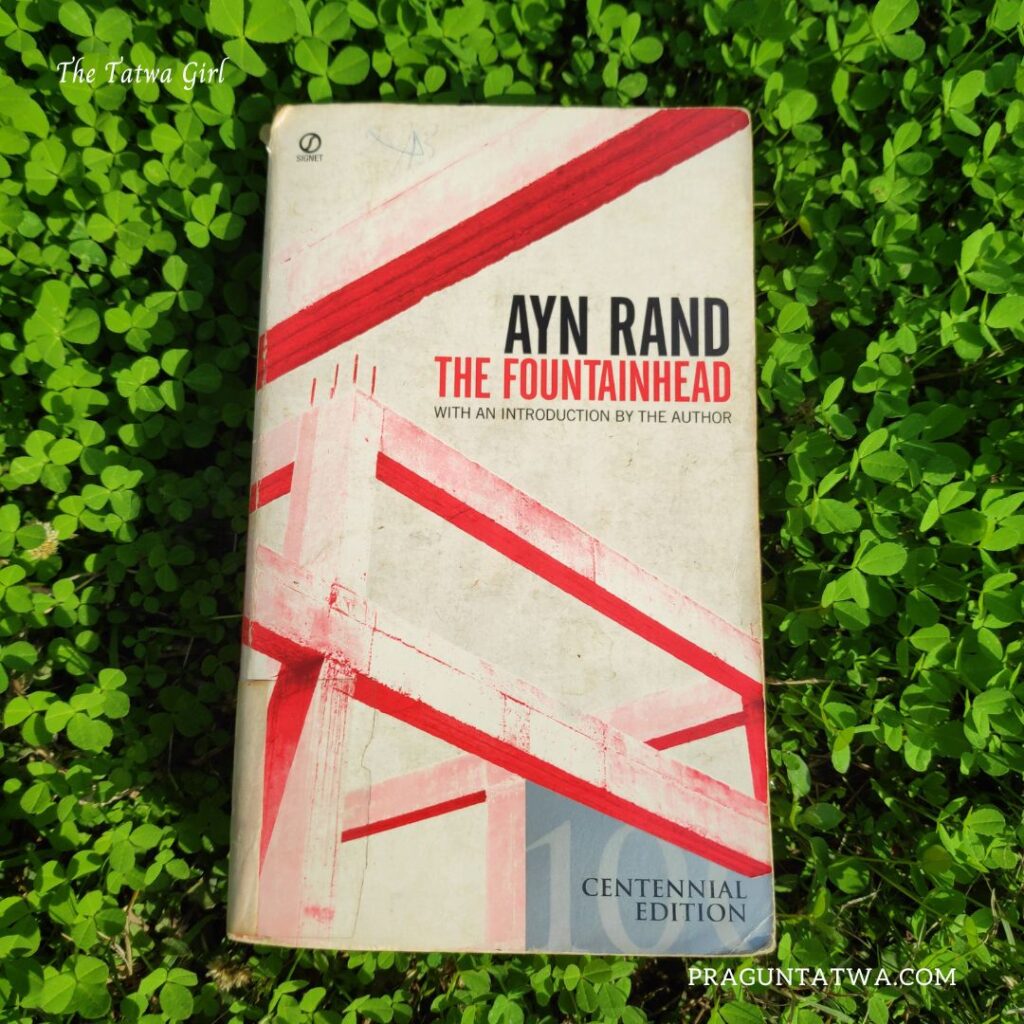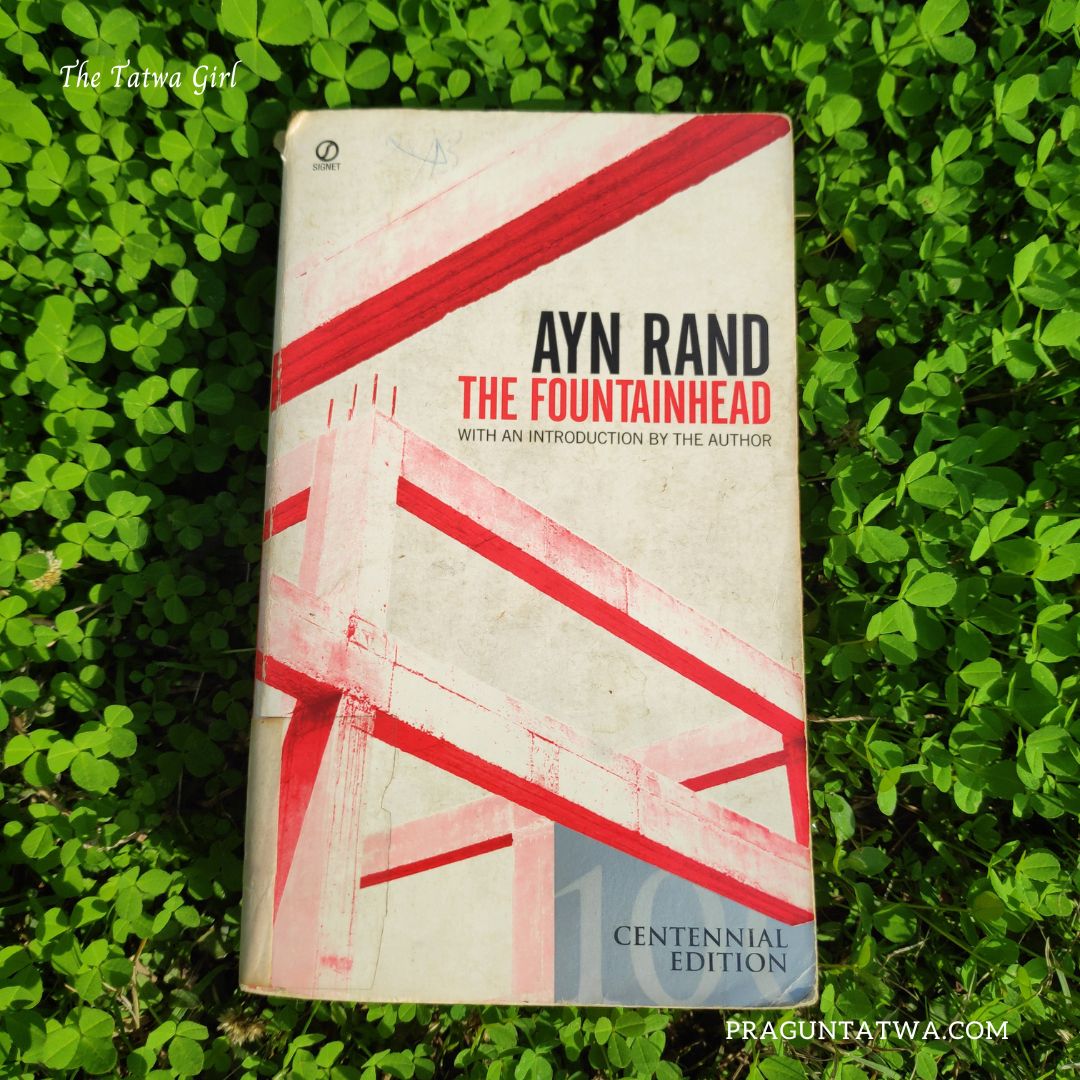Ayn Rand’s The Fountainhead is a philosophical and ideological masterpiece that revolves around individualism, integrity, and the unwavering pursuit of personal vision, as embodied in its central character, Howard Roark. Reading The Fountainhead was a deep, introspective journey, not just through the trials of a young architect, but through the landscape of our own values, desires, and understanding of the self.
The novel resonates particularly well if you have a fascination with architecture or any creative field where individual vision clashes with societal expectations. But more than the technicality of building design, the book challenges you to think about integrity and staying true to one’s beliefs in a world that often promotes compromise.
Themes and Personal Reflections:
- Individualism vs. Conformity
Howard Roark represents the ideal of uncompromising individualism. His refusal to bend to traditional or popular design expectations in architecture mirrors a deeper conflict many of us face—whether to stay true to our passions or conform to societal norms. As someone engaged in sustainability and eco-friendly practices, this resonated with me deeply. Like Roark, staying firm in promoting environmental consciousness often feels like swimming against the current. Rand’s portrayal of Roark is a reminder that the essence of progress comes from those unafraid to stand alone.
Personal note: Roark’s battle is not just an architectural one but an existential challenge that echoes in any field where innovation meets resistance. For a sustainability advocate, this could mean standing firm in the belief that the future can be green, despite short-term obstacles. - The Power of Integrity
Roark’s refusal to compromise in his work sets him apart from other characters, especially Peter Keating, who represents those who take the easier route of social approval. This theme of integrity vs. convenience is a powerful one, and Rand masterfully illustrates the cost—and the rewards—of staying true to one’s vision. It made me reflect on my journey with minimalism and zero waste: it’s not the popular path, but it’s a meaningful one.
Favorite moment: Roark’s speech at his trial was profoundly moving. His declaration that the creator’s primary obligation is to himself and his work, not society, was not just a defense of his actions but a manifesto for anyone who has ever felt the pressure to compromise their beliefs. - The Role of the Creator in Society
Rand paints the creator as someone essential for progress. The novel’s antagonists, including figures like Ellsworth Toohey, represent the forces that dilute creativity and promote mediocrity. Toohey’s manipulative quest for power over others, not through creation but through control, is a sharp contrast to Roark’s desire to create for creation’s sake. This dynamic is a cautionary tale about the importance of recognizing where true value lies.
Personal note: In our modern world, where social media and public opinion often dictate trends and behaviors, the idea of creating something purely for its own sake is radical. The novel made me think deeply about the importance of producing content for my blog, Eco-Friendly With Prachi, with integrity and purpose, rather than succumbing to fleeting trends.

Memorable Quotes:
- “I could die for you. But I couldn’t, and wouldn’t, live for you.”
This quote encapsulates Roark’s belief in self-sufficiency and the dangers of sacrificing one’s life for others’ approval. It challenges the romanticized idea of self-sacrifice, suggesting that true love or devotion does not mean abandoning the self. - “The question isn’t who is going to let me; it’s who is going to stop me.”
A battle cry for those who pursue their passions against all odds. It’s a stark reminder that the only true barrier to success lies in oneself, not in external permissions or approvals. - “A building has integrity just like a man. And just as seldom.”
This is a metaphor for how rare true integrity is, whether in architecture or in people. It emphasizes that, like Roark’s buildings, individuals must be constructed on a foundation of principles.
Key Moments and Emotional Takeaways:
- Roark’s refusal to compromise when he turns down lucrative offers that would have forced him to alter his designs. This defiant act shows how essential it is to believe in your work above all else.
- The courtroom speech, where Roark lays out his philosophy on individualism and creation. It’s a powerful moment that elevates the book from a story about an architect to a manifesto on human potential and personal freedom.
- Roark dynamiting the Cortlandt housing project because it represents the ultimate perversion of his vision. This controversial moment raises ethical questions about ownership and the right to protect one’s creative work from dilution.
Final Thoughts:
The Fountainhead is more than a novel—it’s a bold statement about the power of staying true to oneself in the face of societal pressure. Rand’s characters can be extreme, but their intensity serves as a reminder that great accomplishments often come from unwavering vision. It’s a challenge to the reader: Are you Peter Keating, the one who seeks validation through others, or are you Howard Roark, driven by your own uncompromised passion?
For anyone navigating the challenges of forging a unique path, whether in architecture, sustainability, or any creative field, this book offers powerful lessons. It left me pondering the balance between vision and compromise, and how far I would go to defend what I believe in.
Click here for more reviews from The TatwaGirl

Thank you for joining Prachi The Tatwa Girl. 
Agni—The Fire Tatwa— I write about food under this element. Inspired by its energy and life force, I share special recipes and culinary creations.
Vayu – The Air Tatwa – In this element, I write about things around us, the cultures and festivals being celebrated. Traditions followed and mythology and beliefs of a particular place.
Aakash – The Sky Tatwa – Here, I write about my travel experiences. Here, I describe the infinite skies and towering mountain peaks I encounter during my journeys.
Jal – The Water Tatwa – Here, I express my inner emotions, just like the flowing and ever-moving water. This is a reflection of the continuous flow of my thoughts.
Prithvi—The Earth Tatwa— Earth element, I focus on environmental issues and eco-friendly lifestyle solutions. This includes ways to live in harmony with our planet. In today’s world, sustainable development has become a necessity.
Don’t miss the Green Tatwa Talks podcast, and explore eco-friendly, sustainable living practices from awesome Green warriors I have interviewed, who work towards protecting the environment and bringing about positive change.
Subscribe on LinkedIn and get EcoFriendly with Prachi.
Follow The Tatwa Girl
Check PragunTatwa Feed
Visit my nature stories feed on my Instagram Feed, For more Eco-Friendly content.
Did you hug a tree today? Check my Tree Love posts and learn more about the Trees around us.

Leave a Reply